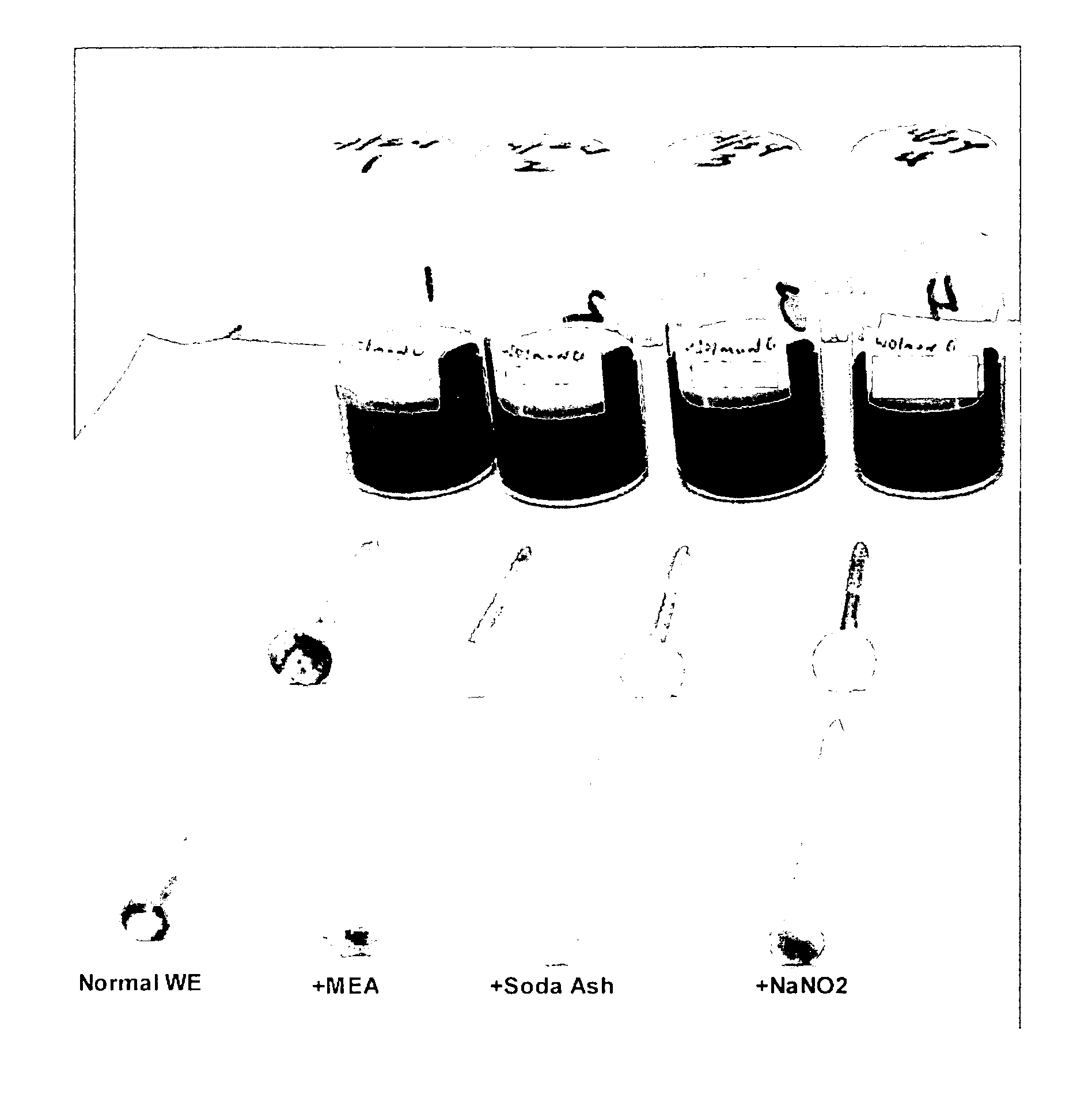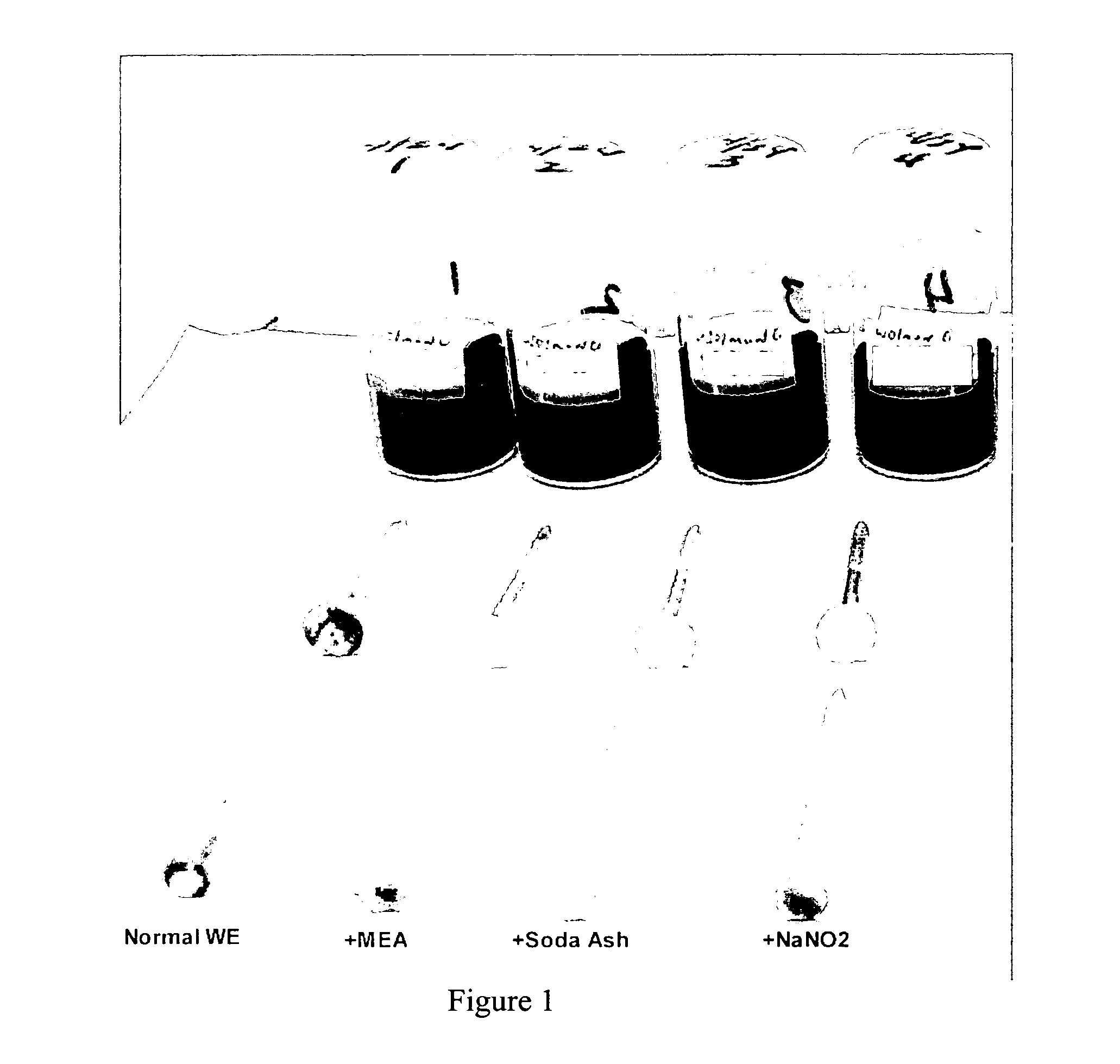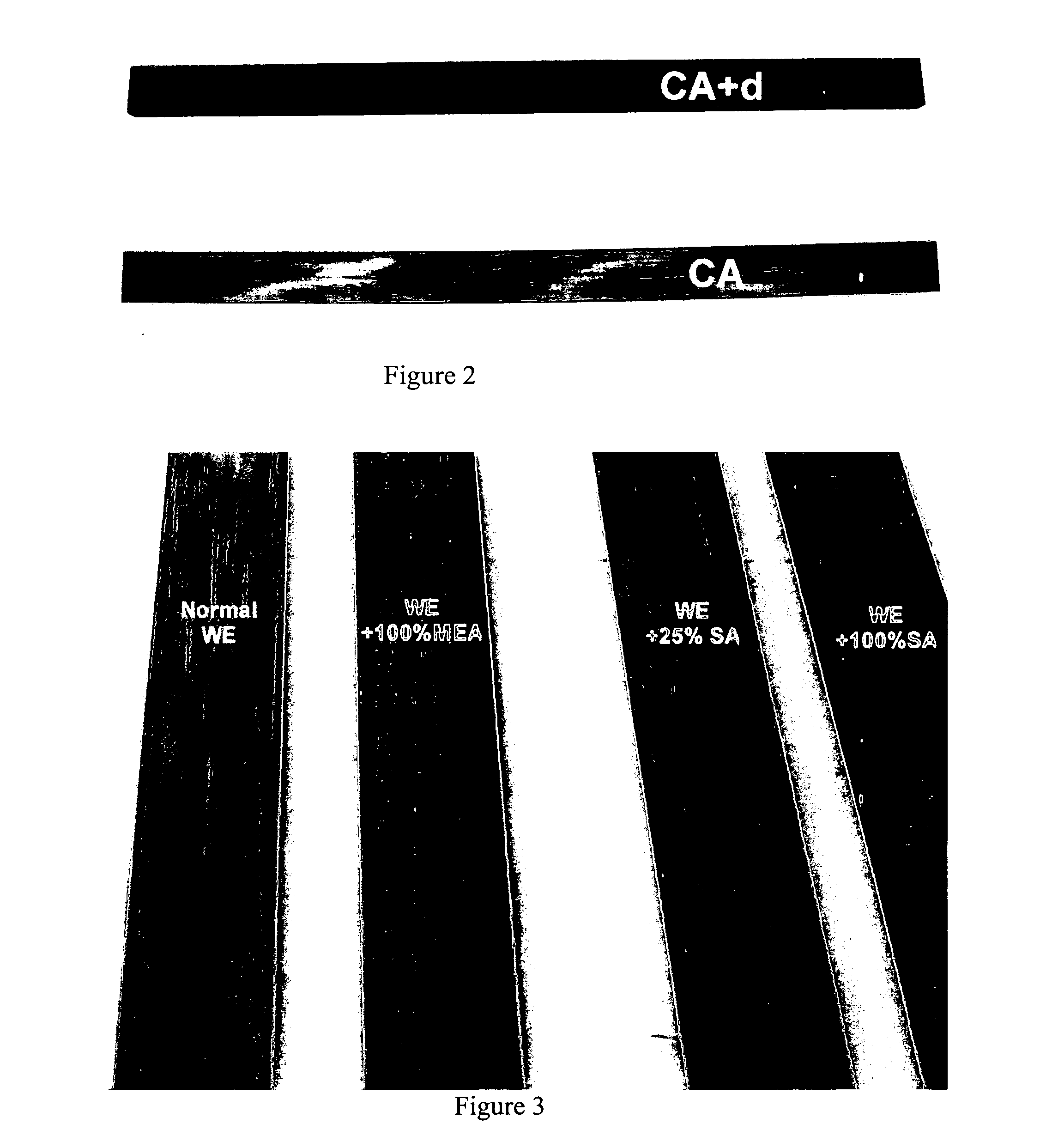Penetration of copper-ethanolamine complex in wood
a technology of copperethanolamine and complex, which is applied in the field of preservation of wood, can solve the problems of affecting the paint-ability of wood, odor, and above-listed formulations that have not been commercially accepted, and achieve the effect of reducing premature precipitation of copper
- Summary
- Abstract
- Description
- Claims
- Application Information
AI Technical Summary
Benefits of technology
Problems solved by technology
Method used
Image
Examples
example 1
Corrosion Test
[0066] The corrosive effect of wood preservative solutions was investigated utilizing a screening test modeled after an American Wood Preserving Association's corrosion test. The methodology involved starting with scintillation vials filled approximately half-full with the treating solutions. The treating solutions used each contained about 0.22% by weight. They were made by forming a concentrate, and then diluting the concentrate with fresh water. The concentrations of the concentrates are shown below:
Sample #1(comp)234(comp)DescriptionNormal“+MEA”+Soda AshNaNO2Cu, wt. %9999MEA, wt. %32623232carbonate, wt. % as CO26666Water, wt. %53232727Sodium Carbonate, wt. %00260Sodium Nitrite00026
These concentrates were then diluted one part concentrate to 40 parts water to give 0.2% copper, which is approximately the strength routinely used to preserve Southern Pine. For each treating solution, two vials were utilized. A 1010 steel nail facing head down and extending about ha...
example 2
[0071] The extent to which to wood preservative penetrates the wood was investigated. Southern Pine strips were dipped into wood preservative solutions containing the following compositions: The wood planks were immersed for a predetermined time in an aqueous solution of tebuconazole (TEB) (added as an emulsion at 3% of the weight of the copper) and copper methanolamine carbonate. Comparative sample 5 contained ˜0.001% of TEB, about 0.22% copper, 0.8% MEA, 0.16% carbonate as CO2, and balance water, which is believed to approximate the commercially available Wolman E® treatment; sample 6 contained the same components as comparative sample 5, but the MEA content was increased to 1.5%; sample 7 contained the same components as comparative sample 5, but also included ˜0.16% soda ash; and sample 8 contained the same components as comparative sample 5, but also included ˜0.6% soda ash. After a certain time, the wood strips were taken out of solution and examined. Photogra...
example 3
Leaching Tests
[0072] Leaching data from wood was measured following the AWPA Standard Method E11-97 procedure. The standard was a sample impregnated with the composition of comparative sample 5. At 0.2% additional MEA, giving 1% in the treating solution, penetration was enhanced but leaching rate of copper from the wood increased by 20% relative to the standard. At 0.7% added MEA, giving 1.5% MEA in the treating solution, penetration was greatly enhanced but the leaching rate of copper from the wood increased by 44%.
[0073] In contrast, Soda ash at 0.16% (the same number of base equivalents as the 0.2% added MEA) enhances penetration dramatically and mitigates leaching. This sample has a copper leach rate that was 9% lower than the standard.
PUM
 Login to View More
Login to View More Abstract
Description
Claims
Application Information
 Login to View More
Login to View More - R&D
- Intellectual Property
- Life Sciences
- Materials
- Tech Scout
- Unparalleled Data Quality
- Higher Quality Content
- 60% Fewer Hallucinations
Browse by: Latest US Patents, China's latest patents, Technical Efficacy Thesaurus, Application Domain, Technology Topic, Popular Technical Reports.
© 2025 PatSnap. All rights reserved.Legal|Privacy policy|Modern Slavery Act Transparency Statement|Sitemap|About US| Contact US: help@patsnap.com



